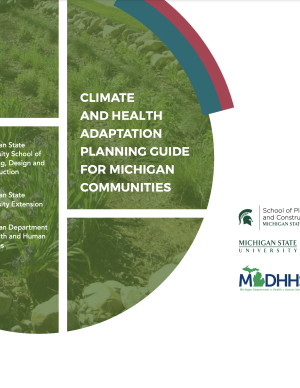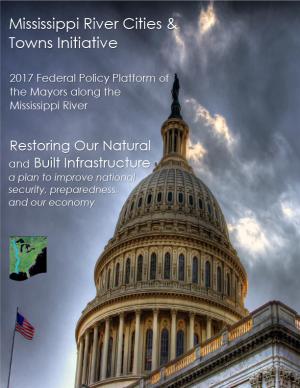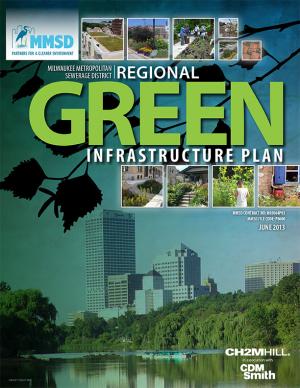This guide is intended to help communities in Michigan and across the Great Lakes Region develop a climate and health adaptation plan or to integrate climate and health concepts into existing initiatives. A climate and health adaptation plan is defined here as a strategy document that fosters collaboration across disciplines and interest groups to instigate a series of activities toward the common objectives of understanding and then preventing or reducing the anticipated health impacts of climate change in the area.
Access a range of climate-related reports issued by government agencies and scientific organizations. Browse the reports listed below, or filter by scope, content, or focus in the boxes above. To expand your results, click the Clear Filters link.
A coalition of 26 businesses, environmental organizations, community groups, and universities in the Detroit area has produced the “Detroit Climate Action Plan.” The proposition intends to address public health and environmental justice issues through a plan that individuals and businesses can practice. The 77-page report contains 20 major goals for the coming years, including calls for the reduction of greenhouse gas emissions by Detroit businesses by 10 percent in the next 5 years, and 80 percent by 2050. Additionally, the plan recommends improvements to the energy efficiency and durability of homes, better stormwater runoff management, expanded use of renewable energy, and broadened recycling and organic waste collection by 2022.
This plan sets forth the 2017 federal policy platform of the Mississippi River Cities and Towns Initiative, an association of 75 U.S. mayors along the Mississippi River. The document sets forth the mayors’ recommendation of federal programs to support and strengthen the built and natural infrastructure of the Mississippi River corridor, proposing specific funding levels and support of several federal programs. Suggestions for finance mechanisms to restore Mississippi River infrastructure are also included.
This report, the first of its kind for the City of Grand Rapids, outlines the condition of the city's climate resiliency and offers recommendations for how it can both impact and adapt to climate change. The report's goal is to both spur a larger community conversation around processes that will enable Grand Rapids to become a more climate-resilient city and to spur many specific short- and near-term projects, policies, programs, and plans to mitigate the effects of climate change. The report documents projected local climate changes, their potential negative impact to low-income families, and outlines small near-term solutions that the city can make to curb or adapt to climate change. Recommendations include investing in green space and improving the city's tree canopy, improving the city's energy autonomy, and implementing green street infrastructure materials and maintenance techniques.
The Dane County Climate Change Action Council was formed in March 2013 with a mission to ensure that Dane County government was better prepared for weather extremes brought on by global climate change. The Council facilitated an internal review of county preparations and potential modifications to the operations and capital investments of the county, resulting in this report identifying Dane County’s potential vulnerabilities to weather extremes associated with global climate change and strategies to adapt to a changing climate. The report is the first step in the county’s effort to improve the resiliency of its climate-sensitive resources in the face of climate change; future steps will include cross-departmental collaborations to implement the adaptation strategies outlined in the report.
The City of Marquette is the largest city in Michigan's Upper Peninsula and one of the most economically diverse in the state. The city is especially vulnerable to environmental, economic, and social impacts of climate change, largely because it borders Lake Superior. A team of Michigan State University Extension specialists and educators received funding from the Great Lakes Integrated Sciences and Assessments Center (GLISA) to collaborate with GLISA researchers, relevant decision makers, and stakeholders in Marquette to increase community resilience through incorporating climate variability and change adaption strategies into local land use master plans and policies. Key stakeholders in the agriculture, forestry, natural resources, health, planning, and tourism fields participated in the development of climate change concerns and strategies. Overwhelmingly, residents and local leaders wanted to protect the natural environment that makes Marquette such a desirable place to live. This report details the process and results of this community-driven process, and also contains specific, detailed GIS maps of the region that reflect the climate vulnerabilities and concerns of the residents and leaders in the Marquette region.
NOTE: This report inspired the creation of another report: "Climate and Health Adaptation Planning Guide for Michigan Communities"
The Milwaukee Metropolitan Sewerage District created a systematic plan to implement widespread green infrastructure. As a regional agency, the District is uniquely positioned to lead green infrastructure planning for the Milwaukee region and has funding to undertake the work. This effort will help the District make logical green infrastructure funding decisions, will help municipalities and non-governmental organizations prioritize their actions, and will help inform municipalities and private funders where their green infrastructure money can do the greatest good. Technical analyses for the region’s impervious surfaces, costs/benefits, and recommendations were all completed; the report comprises the final Regional Green Infrastructure Plan. The plan was approved by the MMSD Commission on July 22, 2013.
The Michigan Climate Action Council (MCAC) was created on November 14, 2007, by Governor Jennifer Granholm. Governor Granholm charged the MCAC with producing a greenhouse gas emissions inventory and forecast, developing this comprehensive Climate Action Plan with recommended greenhouse gas reduction goals and potential actions to mitigate climate change in various sectors of the economy, and advising state and local governments on measures to address climate change.
In 2008, the Iowa General Assembly created the Iowa Climate Change Advisory Council (ICCAC), consisting of 23 voting members appointed by the state's governor. The ICCAC was tasked with developing a greenhouse gas emission reduction proposal to the governor and the general assembly. This document is the council's final report.
The Global Warming Task Force was created by Wisconsin Governor Jim Doyle in April 2007. The Task Force created this report, which contains its policy recommendations to reduce greenhouse gas emissions in Wisconsin, as well as its short- and long-term goals for reducing greenhouse gas emissions in the state.
In 2006, Minnesota Governor Tim Pawlenty announced the “Next Generation Energy Initiative,” which included the “development of a comprehensive plan to reduce Minnesota’s emissions of greenhouse gases.” During this announcement, the governor requested that the Center for Climate Strategies help in the development of Minnesota's Climate Mitigation Action Plan and the formation of the Minnesota Climate Change Advisory Group. The Climate Change Advisory Group, which was tasked with developing a comprehensive set of state-level policy recommendations to the governor, produced this report.
In 2006, Illinois Governor Blagojevich launched the state's Global Warming Initiative by executive order that created the Illinois Climate Change Advisory Group. The group's purpose was to recommend state-level strategies to meet Illinois’ greenhouse gas reduction goals, which are similar to those set by other states and those proposed in Congress: 1990 levels by 2000, and 60 percent below 1990 levels by 2050. This document is the Advisory Group's report submitted to the governor.
In 1991, the Missouri Commission on Global Climate Change and Ozone Depletion concluded that climate change is being bolstered by human activity. This report includes the 1991 final report of that commission, the 1992 Final Report of the Statewide Energy Study, the 1992 final report of the Department of Natural Resources’ Institute Project, and two previous reports from the U.S. Environmental Protection Agency Phase 1 and Phase 2 Greenhouse Gas projects, which were issued in 1996 and 1990, respectively.










